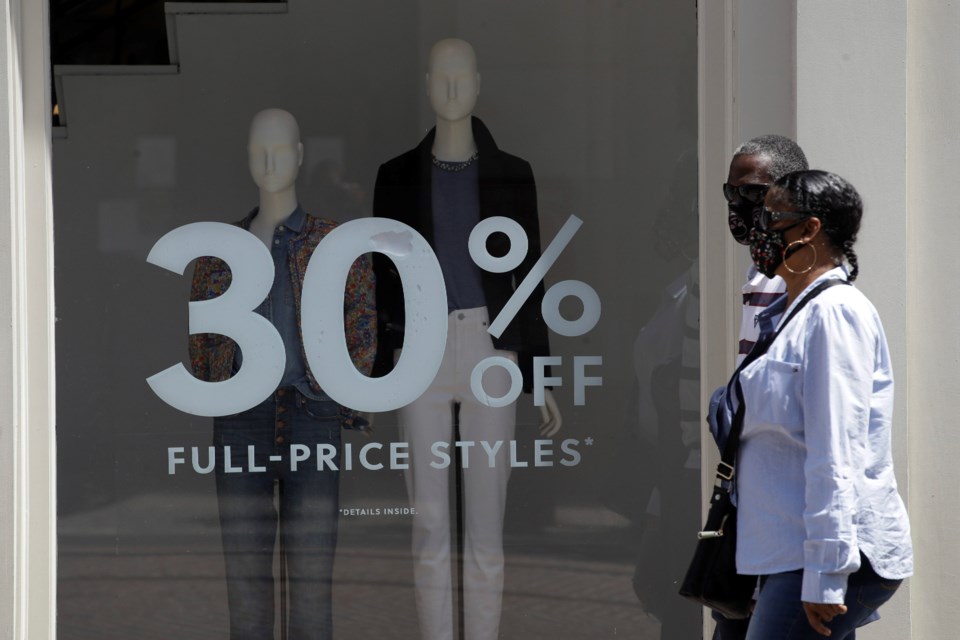LOS ANGELES — Retail shops and offices were allowed to open Wednesday and the largest Roman Catholic archdiocese in the U.S. announced a plan to resume services as Los Angeles County took another step toward a reopening that seemed hard to imagine a week ago.
Los Angeles, which has been proceeding more cautiously because of a disproportionately large share of California's coronavirus cases, moved ahead after Gov. Gavin Newsom relaxed statewide rules Monday to allow worship and shopping to resume with restrictions.
San Francisco and other Bay Area counties, which have had more success curbing the spread of the virus than LA, have yet to take those steps out of an abundance of caution. Santa Clara County health officer Sara Cody, who led others in issuing a stay-at-home order, even criticized the governor for relaxing rules too rapidly before they could determine if incremental reopenings led to a resurgence of infections.
In LA, the new rules were announced just a week after the county set a July 4 target to further reopen businesses. At the time, most of the state's counties were moving to let restaurants serve meals for the first time in two months and allow shoppers to return to malls and other stores that had been shuttered because they weren't deemed essential.
LA officials downplayed the change of plans Wednesday, saying they always intended to gradually reopen businesses leading up to Independence Day.
“I don’t think really there’s a disconnect," Public Health Director Barbara Ferrer said. "We always talked about a phased-in approach. It’s never been one day we’re closed, one day we’re open.”
LA, with a quarter of California’s 40 million residents, has nearly half the state’s 100,000 COVID-19 cases and more than 55% of the 3,895 reported deaths.
Dr. Jeffrey Klausner, an epidemiology professor at the University of California, Los Angeles, said officials are in the position of balancing public health with concerns about businesses collapsing and people losing their jobs.
“These are economic realities,” said Klausner, a former deputy public health officer in San Francisco. "That is kind of countervailing what the public health priorities are and there’s always that tension, always that push and pull between the public health goals of having the best health outcomes for the most people and the other competing interests, whether it be economics or education or public safety.”
Stores that have been open for pickup orders can now allow a limited number of shoppers. Offices can reopen, flea markets can resume and churches can allow services limited to 25% of capacity or no more than 100 worshipers, whichever number is lower.
Archbishop José H. Gomez said in a letter to parishes with an estimated 4.3 million Catholics that they must submit reopening plans under guidelines that include sanitary measures to help prevent spread of COVID-19 and could resume daily Mass on June 3. Among other measures, choirs will be replaced by a cantor and accompanist and people should be dismissed after Mass by groups of pews.
“As we enter this new moment, it is important to remember that the coronavirus is still out there, it is still contagious, and it is still dangerous,” Gomez said.
Officials have moved swiftly in the past few weeks to allow beaches and trails to reopen, along with a growing number of businesses, which must receive county approval. On Tuesday, Newsom added hair salons and barbershops t o the list and on Wednesday he
Bill Allen, chief executive officer of the L.A. County Economic Development Corp., said the stay-at-home orders were well-intended and successful but it was time to start reopening. He said the business closures had taken a huge toll on workers, particularly low-wage earners who didn't have the means to weather the impact.
“Those prolonged shutdowns we’re having potentially long-lasting economic and health impacts on our most vulnerable residents and communities,” Allen said.
Brian Melley, The Associated Press



